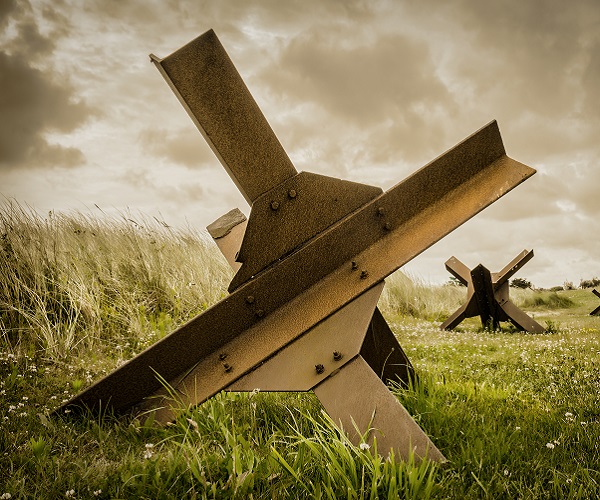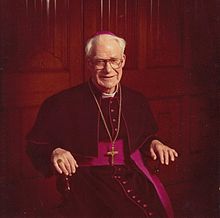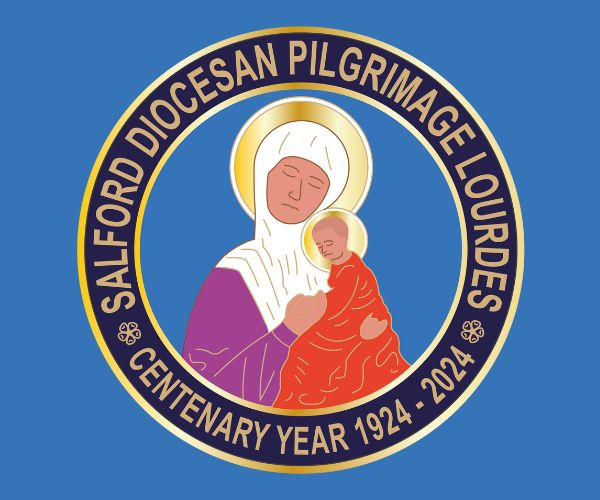
D Day and Salford Clergy
Wednesday 5th June 2019It’s reckoned that 55 priests of the Salford Diocese served as chaplains to Her Majesty’s Forces during the 2nd World War. As far as I know, the only one present on the Normandy Beaches on 6th June 1944 was Fr John Corbett, chaplain to the Commandos.
John Corbett was born in the United States. His parents had gone there from Bolton seeking work and a new life. His father died when John was only a baby and his mother brought him back to Bolton. After studies at St Bede’s College in Manchester and then Upholland College, Wigan, John was ordained priest and went as curate to the English Martyrs parish in Whalley.
The parish priest there was deaf and his housekeeper, who was his sister, was also hard of hearing. Conversation was carried on by shouting at each other. The young curate used to turn his radio up to full blast to drown the cacophony and to let off steam he would ride his motorbike pell-mell up the nearby Trough of Bowland. Volunteering for service as an army chaplain, even in war-time, seemed an easier option.
John Corbett was a natural sportsman. While at St Bede’s, Arsenal tried to sign him onto their books as a footballer and Lancashire County tried to sign him up as a cricketer. Priesthood prevailed, but his fitness took the youthful Fr Corbett into service with the Commandos. He trained with them, carrying for example full kit whilst running up Ben Nevis in winter time.
6th June 1944 saw him landing with a Commando unit in Normandy. He was to be on the beach for only one hour and a half. A mortar bomb exploded near him, shattering his right shoulder. Fortunately, the rest of his body was shielded by his army kit. He woke up in hospital in Southampton where surgeons attempted to put his injuries right. Twenty-six operations later they admitted defeat. His right arm and right hand were useless. Fr Corbett had to learn to do everything, including writing, with his left hand.
Fr George Richardson, Parish Priest of St Margaret Mary’s, New Moston, took him into the presbytery there and Fr Corbett was nursed back to health. His sporting prowess flowered again, this time in bowls. Even left-handed he became something of a champion. With health restored he was appointed Parish Priest of Sacred Heart, Gorton. I owe an enormous debt of gratitude to Fr Corbett. I was appointed curate at the Sacred Heart and was there for three years, 1963-66. Straight out of seminary and wet behind the ears I had so much to learn. No-one could have had a better mentor than Fr John Corbett. Practical, down-to-earth, prayerful, with a love of the Church and humour with it he taught me so much. When a letter came from Bishop Thomas Holland I was loathe to leave.
That letter from the bishop appointed me as his secretary at Wardley Hall. It was a move from one priest who had been on the Normandy Beaches on 6th June 1944 to another who had been there too. Thomas Holland, a priest of the Liverpool archdiocese, had taught in the English Colleges in Valladolid and in Lisbon, but in 1943 he volunteered as a naval chaplain.
D-Day saw him as chaplain to a Royal Marine commando unit sailing into Juno Beach along with the Canadian army and navy.
 In his Memoirs, ‘For Better and For Worse’, published in 1989 Bishop Holland recalled some of the events on that day. His ship was the Ascanius, fittingly enough registered in Liverpool with a mainly Liverpudlian crew. Bishop Holland recalled how he had a neat but tidy cabin, but then, ‘as we hit the Normandy Beaches, I surrendered my cabin to our first casualty. I’d little choice in fact. Even so, I vividly remember being overwhelmed by the ecstasy of possessing nothing – a totally unmerited Franciscan thrill of joy.’
In his Memoirs, ‘For Better and For Worse’, published in 1989 Bishop Holland recalled some of the events on that day. His ship was the Ascanius, fittingly enough registered in Liverpool with a mainly Liverpudlian crew. Bishop Holland recalled how he had a neat but tidy cabin, but then, ‘as we hit the Normandy Beaches, I surrendered my cabin to our first casualty. I’d little choice in fact. Even so, I vividly remember being overwhelmed by the ecstasy of possessing nothing – a totally unmerited Franciscan thrill of joy.’
He recalled the boom of the guns as their ship neared the shore and the splash of the shells all round them from German fire. Arriving on the coast, he moved from ship to ship and between Juno and Sword and Gold Beaches. There were many casualties from high fragmentation shells and he had a lot to do. One vessel he boarded was a Landing Craft Guns. A shell had pierced the ratings’ messroom. ‘The only living creature to emerge unscathed was the ship’s dog.’ That night he had a tent ashore. ‘I remember bedding down … too tired to bother about whether I’d be there in the morning.’
As the days passed, he spent many a night on the last ship he visited. He was the only Catholic chaplain in the area and consequently his services were much in demand. He would celebrate Mass each day for whatever crew members were able to attend and he encouraged the men to avail themselves of confession. Very many did. On one ship he baptised more than two dozen Congolese sailors, giving them minimum instruction in the faith, christening them all with the name Peter and giving them a certificate to show to the priest in the Congo when they got home, ‘if ever they did’.
Polish vessels also took part in the landings. One such was the Dragon, hit by a human torpedo. Once on board, Fr Holland worked his way through the ship. ‘The magazine flooded with oil. Nothing one could do for the victims engulfed there … Was it the engine-room? Or the magazine? I there saw sights that killed for ever the “glamour of war”, if that ever existed.’
Bishop Holland seldom spoke about his D-Day experiences but I did hear him elaborate on that last sentence several times. He was obviously deeply affected by the slaughter he had seen. Nor did he mention the fact that he was decorated with the Distinguished Service Cross. The citation said it was awarded for ‘gallantry, skill, determination and undaunted devotion to duty during the landing of the Allied Forces on the coast of Normandy’. He wore his DSC on Armistice Days.
It is fitting that Salford Diocese should remember with pride these two great priests and heroes as we come to the 75th anniversary of the D-Day Landings. I am so grateful that I had the wonderful experience of working with them both.
Written by Mgr John Allen, Parish Priest of Our Lady of Grace, Prestwich
Tagged | Society



